A Wisdom of Wombats
A wombat bit me.
A wisdom of wombats is a wonderful name for a group of wombats and there’s none wiser than the ones that live on Maria Island, off-shore from Tasmania. There are no predators, yet endless acres of grass to graze and bush to burrow. Subsequently the wombats on Maria are not afraid of people, and graze on the grassy slopes all day. They are usually nocturnal, but here they can graze in the sun and rain whenever they choose. They are a mecca for tourists, and when I was there recently I was enamoured again too.
They are so cute? Well not always. I was standing straddled over a culvert as a wombat wandered along. I was expecting him to go through my legs, but instead, he stopped, sniffed my leg … how cute… and then bit me. No skin was broken, but it was incredibly painful for about 20 minutes. My fault entirely! I guess that’s what the two other tourists said when they reported to the ranger that they too had been bitten that day.
Wombats are unique creatures. They are a marsupial. The baby joey is born alive, weighs about two grams and is undeveloped. It crawls to one of two nipples in the mother’s pouch and stays firmly attached until its fur grows. Then it tentatively pokes its head out and nibbles on the grass while still retaining the safety of the pouch. Gestation is between 20 – 30 days, but it is
6 - 7 months before it finally leaves the pouch. Wombats can live up to 15 years in the wild, but over 20 years in captivity.
Wombats poo in cubes and always on the highest ground, be it a rock, a mound or a boardwalk, to mark their territory. It’s a great design feature, as a cube doesn’t roll off. It can take a wombat 4-6 days to digest a meal.
A wombat’s backside is its main form of defence. It consists of four plates of cartilage, fat, skin and fur. It can block the burrow entrance or even crush a predator. No matter how cute or cuddly a wombat looks, don’t ever corner or distress them. Their teeth are continually growing so that they are not worn down when grazing on roots and shoots, and they can run as fast as a human. Beware!
But baby wombats are incredibly cute. Years ago, 42 years ago to be exact, I worked at a wild-life park and raised a baby wombat – Wanda. She liked to snuggle in a woolly hat or jumper, usually tucked under my jumper for shared body warmth. She required regular bottle feeding and so travelled everywhere with me. She needed to be fed every couple of hours initially, and that included over-night. Native animal formula was very basic all those years ago, but formula is now produced for different species and different stages of development.
My family was living on a yacht at that time. She became well known as I wrote a story about her, ‘Wanda Wides the Waves’, that was published in ‘Cruising Helmsman’ magazine.
“To live aboard a yacht in Tasmania in full winter may not appeal to everyone, but despite icy nights, continuous condensation and sometimes snow on the deck – to say nothing of the hair-raising rows back and forth to the mooring – life in the Roaring Forties in June can have its compensations.
On a crisp morning with the sun shining, pure air, perfect reflections on the water and total peace, who would doubt that ‘this is the life’. To further complicate, or perhaps enhance life aboard out Cavalier 975, Rightaway, we unexpectedly became the custodians of an orphan wombat. Well, how could I refuse to accept the little bundle of fur nuzzling for a feed?
Of course, the mind boggles at the thought of a full-grown wombat lumbering about a yacht chewing on the bulkheads, burrowing through the hull and generally knocking people overboard, but surely a mini-wombat would be the ideal live-aboard pet!
Young wombats are exceptionally clean, don’t make a noise, sleep a lot and are incredibly affectionate, so Wanda began to ‘wide’ the waves. She accepted life on board and those never-ending trips back and forth in the dinghy with the aplomb of a well-seasoned pouch traveller. She bore with distain those comments that “if that damn wombat chews my teak, she’ll go overboard.” She accepted with relish those 4am feeds with temperatures around 2 degrees Celsius. Oh, how I longed for a cabin heater.
When she became ill, perhaps a chill, talk centred around a sea burial if the worst happened. Obviously, this was not the way for a wombat to go and she rallied remarkably quickly and continued to share life on board.
When Wanda heads back to life in the bush, I’m sure we’ll miss the smell of fresh hay, the stray blades of grass that found their way into the bilge and self-drainers, and the fun of just raising her. But to be honest, wombats really belong on land, and pets in general aren’t ideal on a boat of that size already filled with four people and their belongings …. but who could resist Wanda on the water?”
If you too would like to rescue a joey always stop if you see a wombat killed on the road and check the pouch for a joey. Call a wildlife carer. In Tasmania Bonorong Wildlife Sanctuary can facilitate the meet-up. If you would like to be a registered carer sign on to one of the carer courses Bonorong hold regularly. It is a tricky and time-consuming job to raise a joey, but oh so rewarding when it successfully re-wilds.
We were fairly blasé about raising wildlife back in the 1970-80s, just as we were about raising children.
Nowadays there is much more knowledge, and care is a lot more prescribed, to have a greater chance of success.
Much like children? Or not?

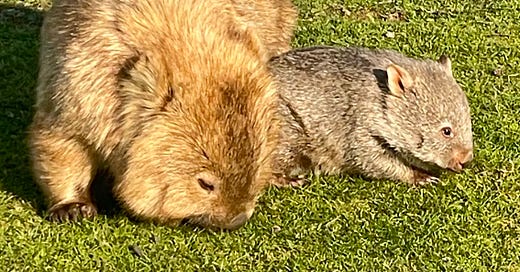



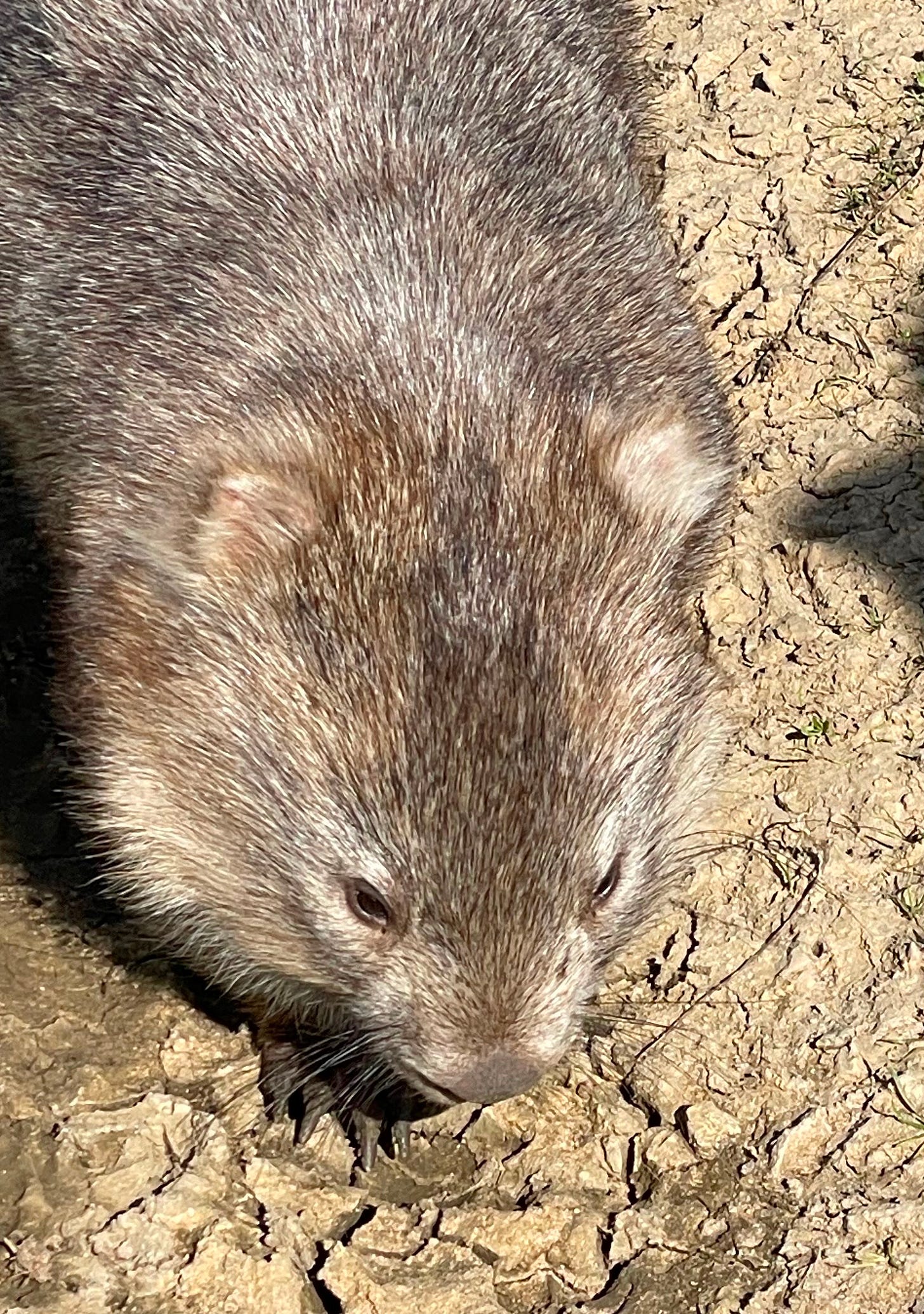
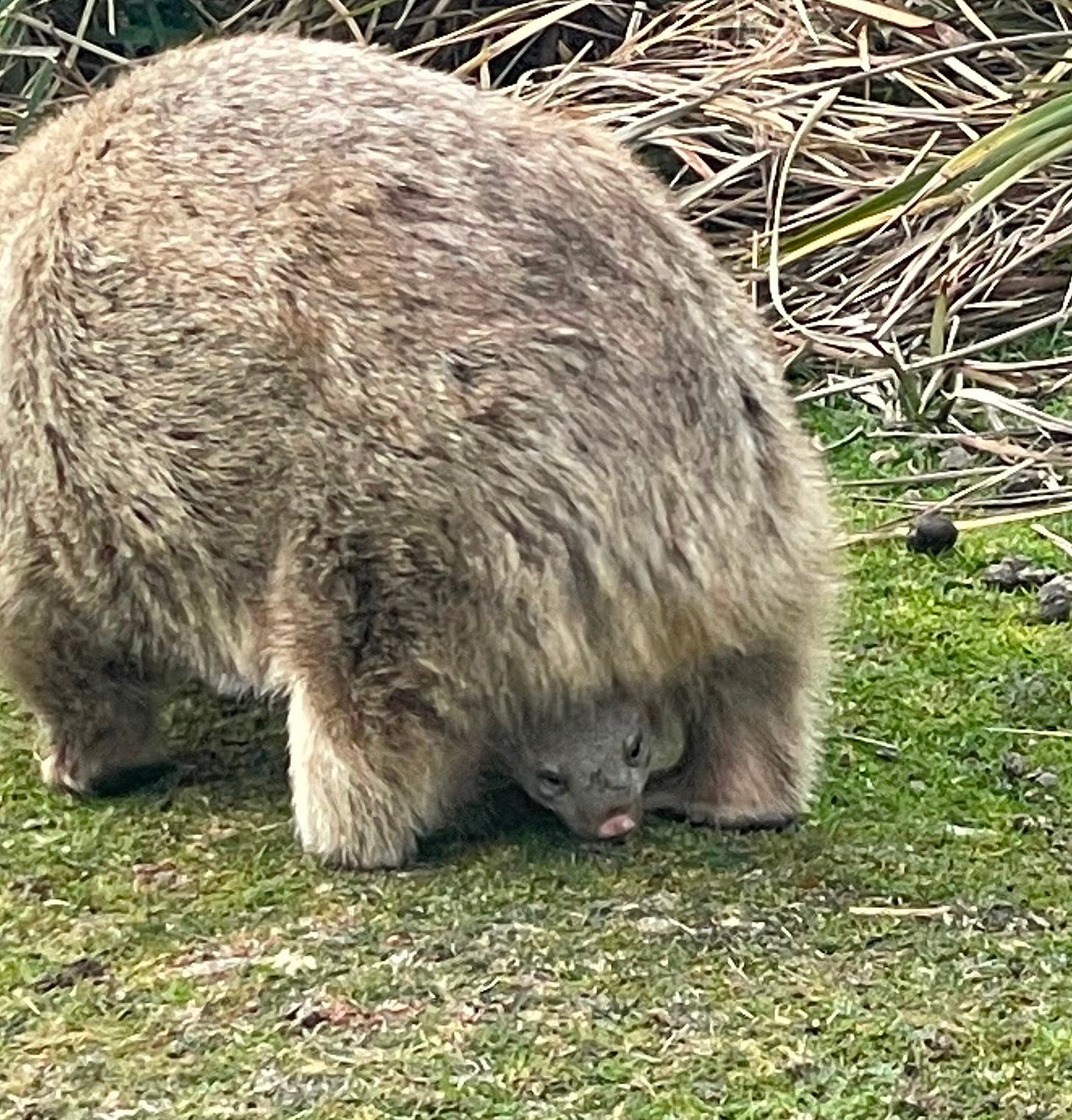
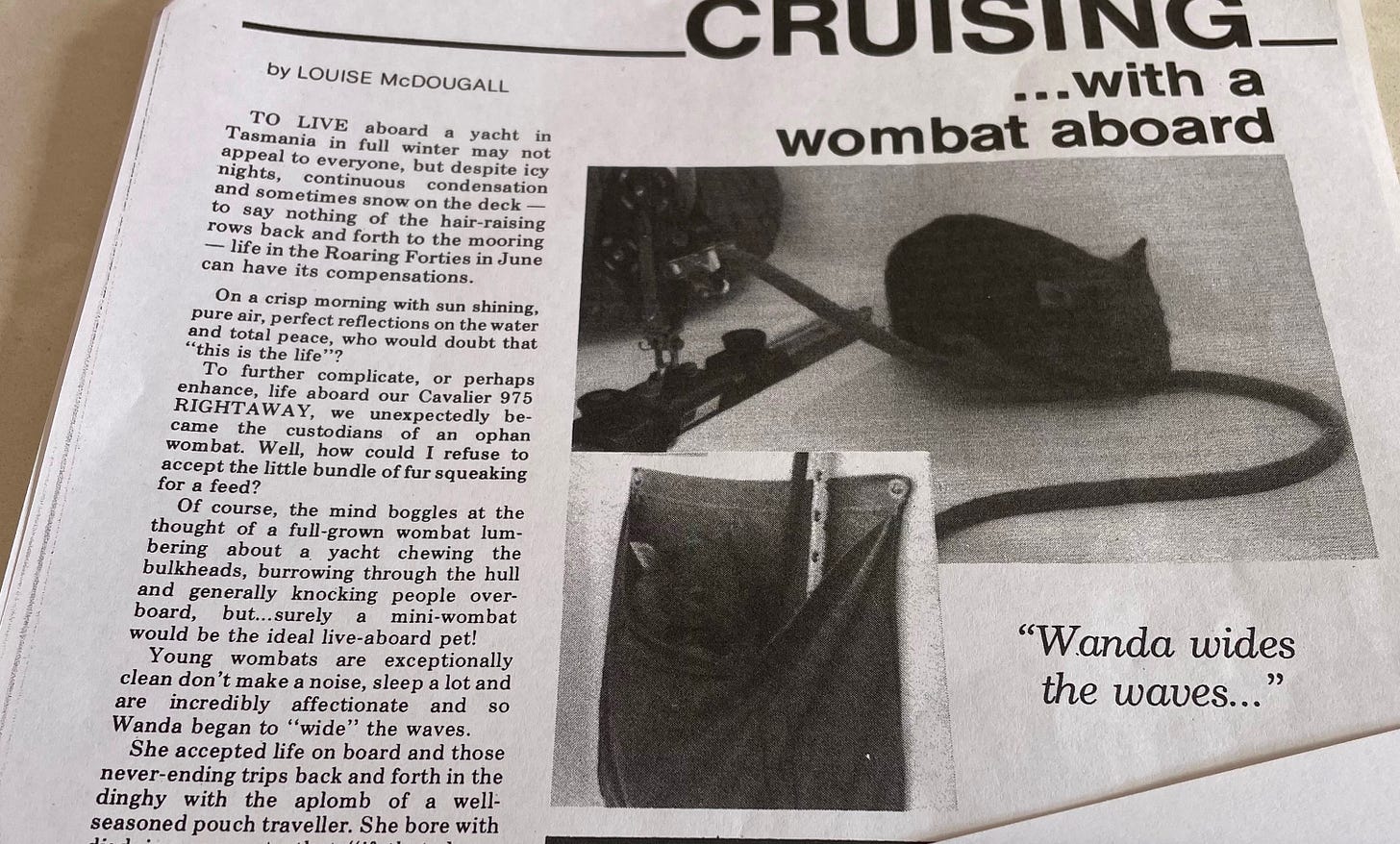
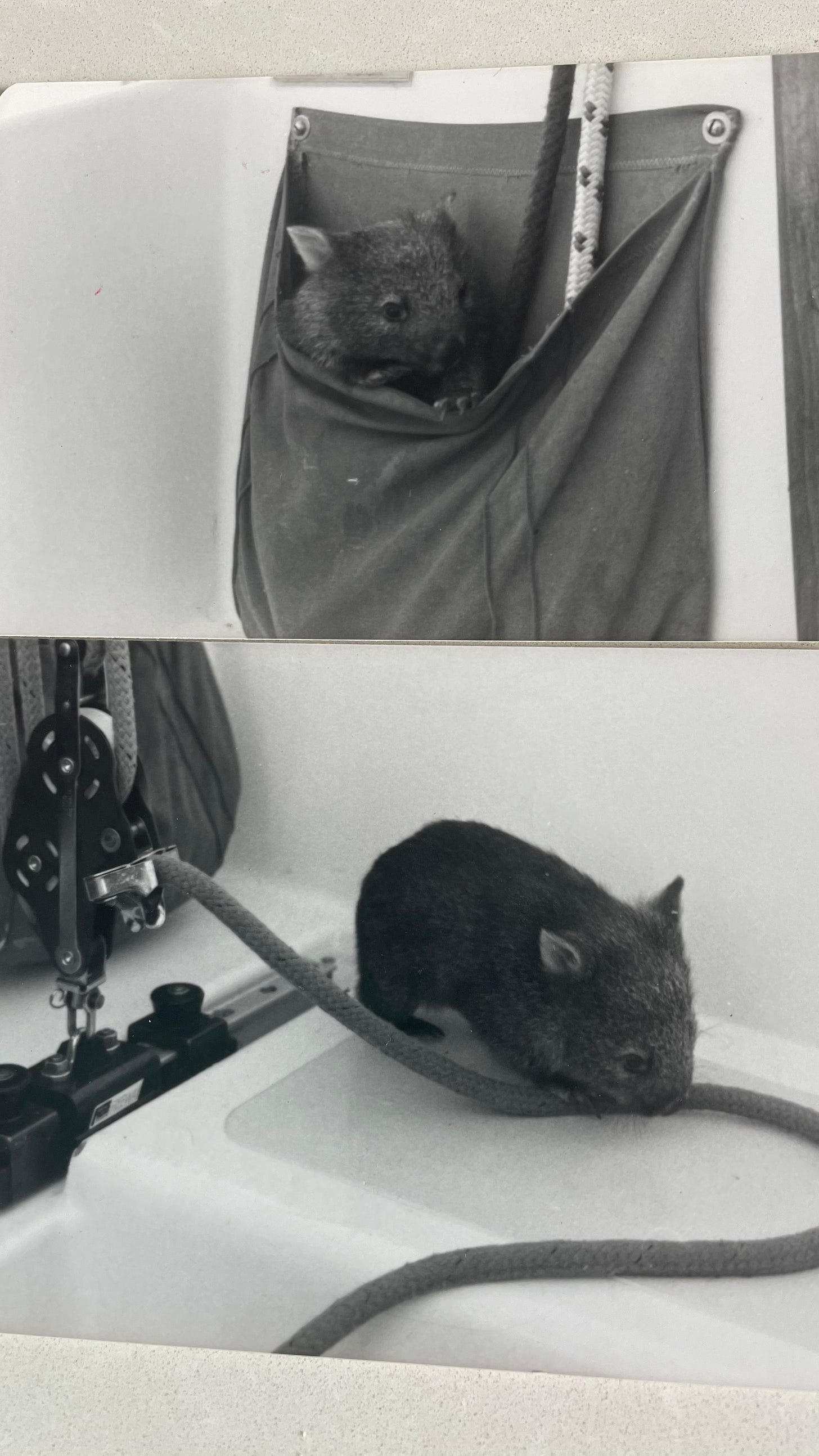
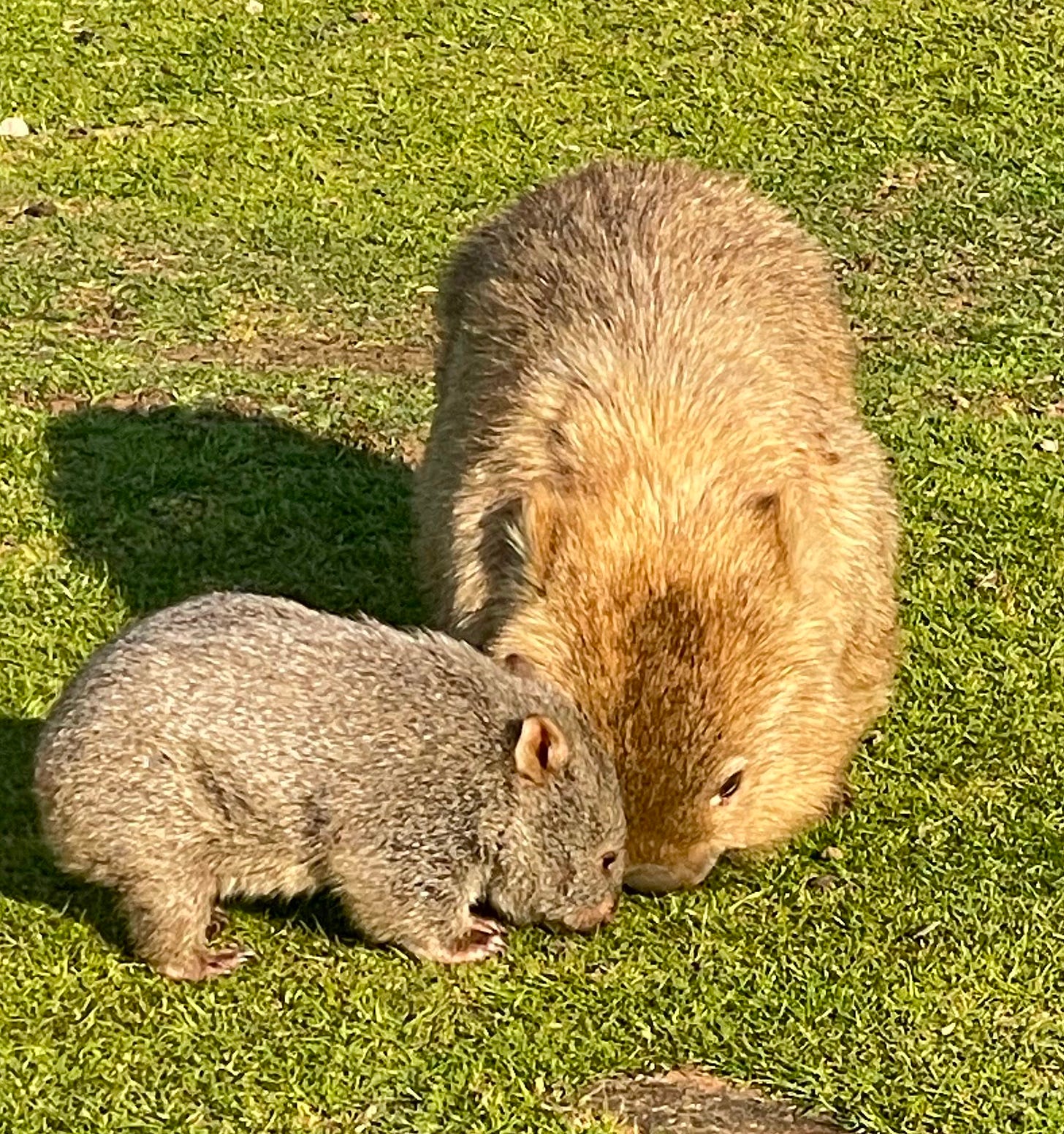
Wanda Wides the Waves would make a great kids book. Maybe you could resurrect it publish and sell it. Just a thought.
I may never get to see a wombat in it’s natural environment, but I sure enjoyed reading about your experience